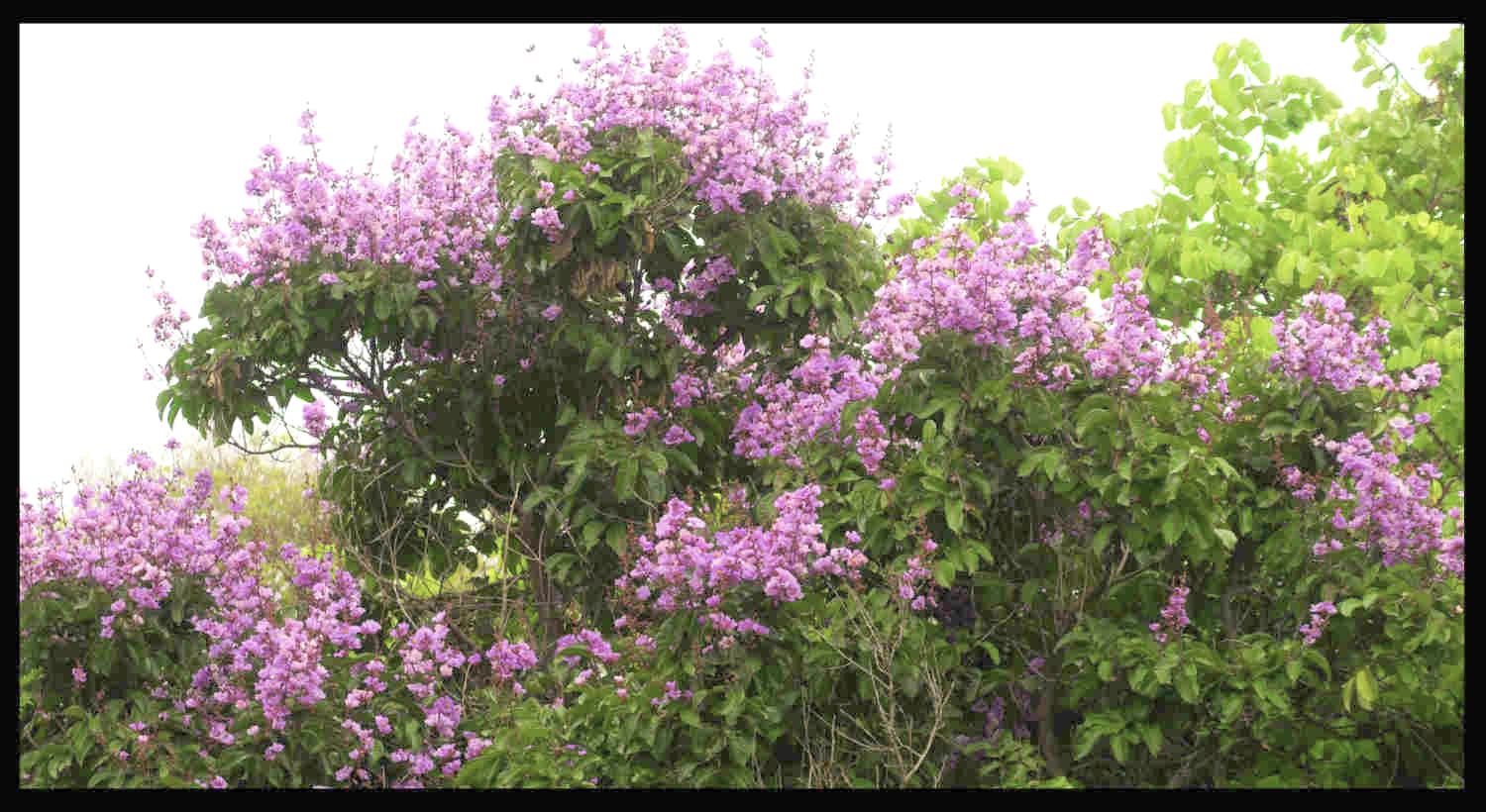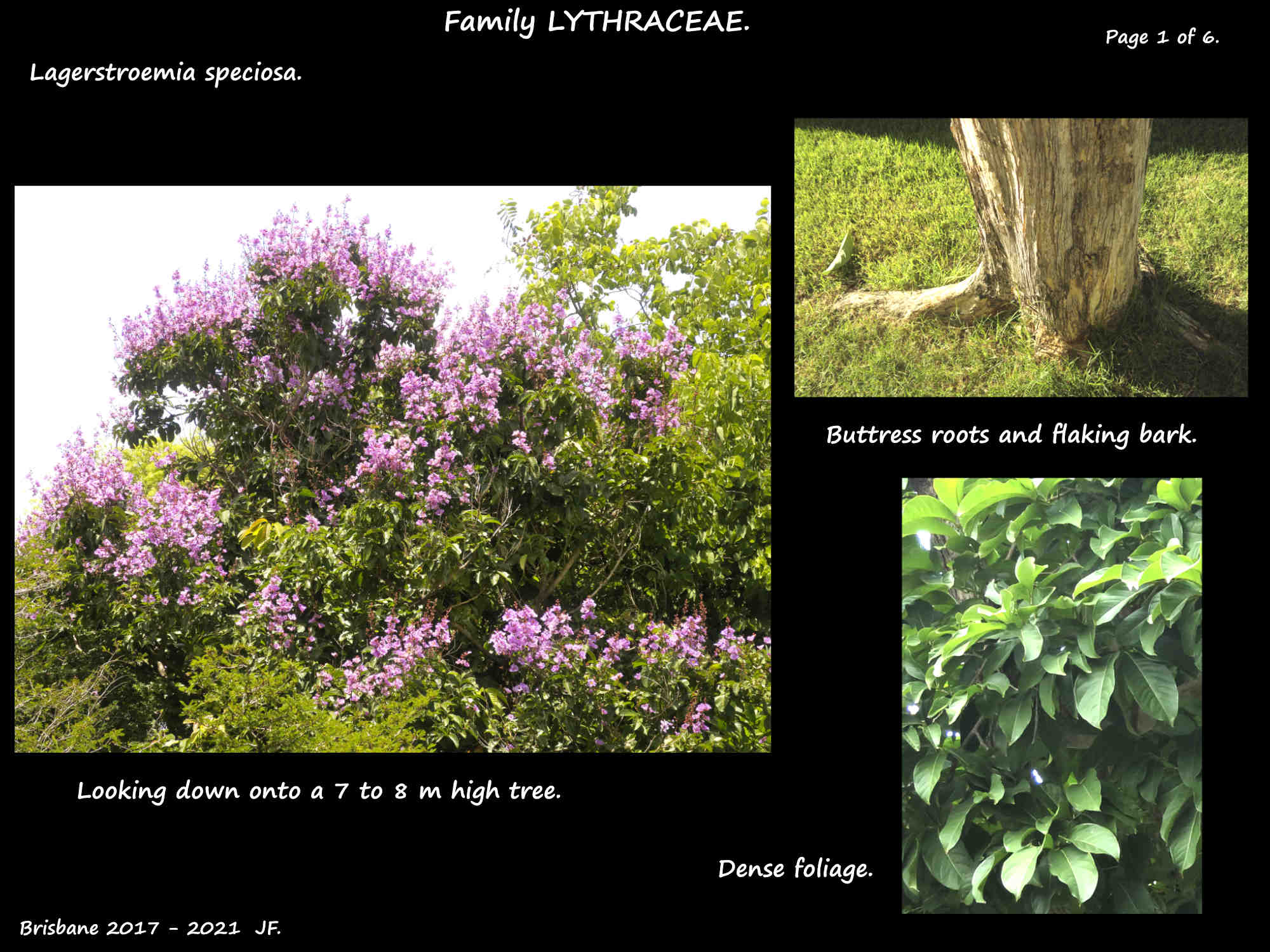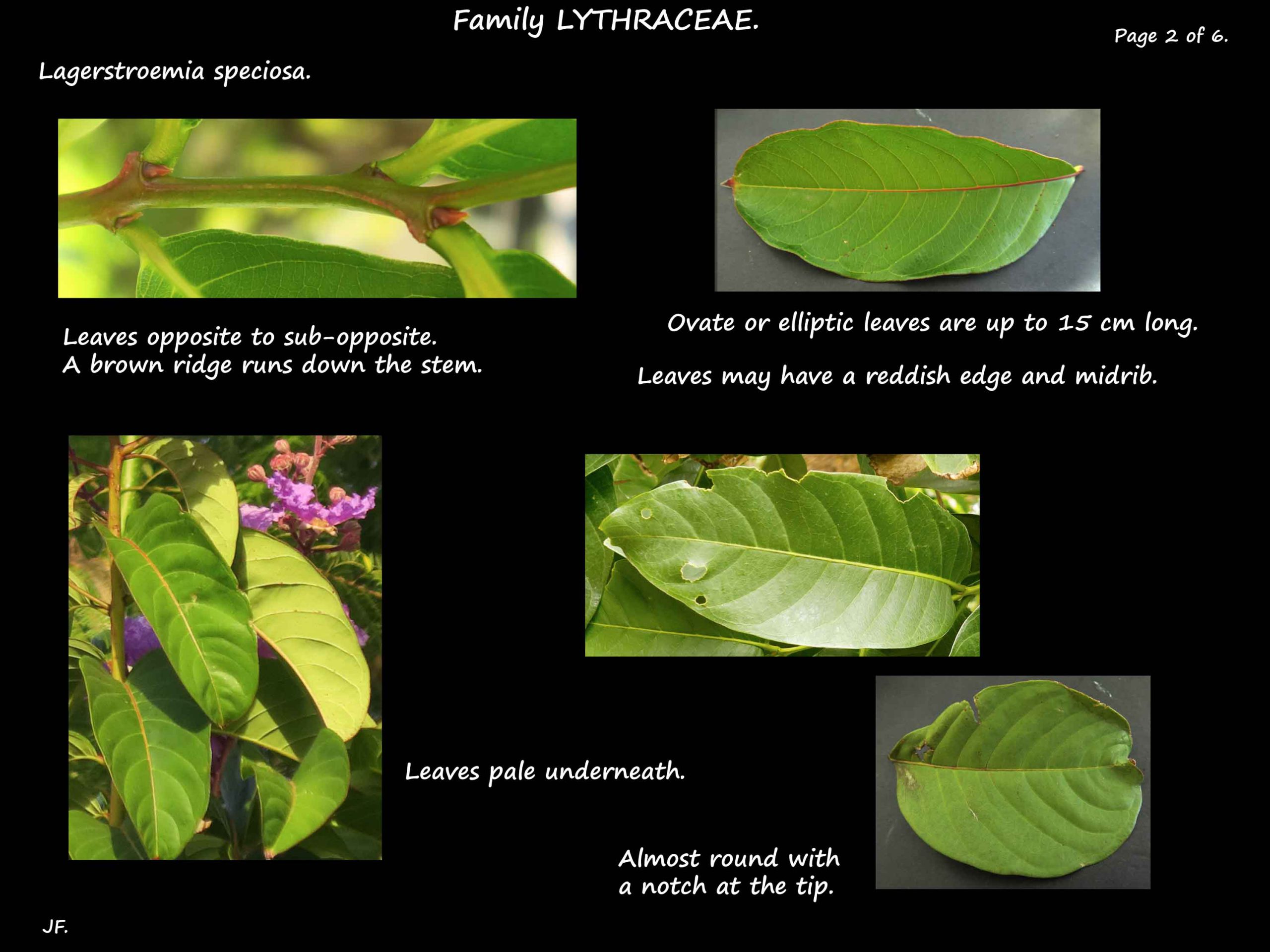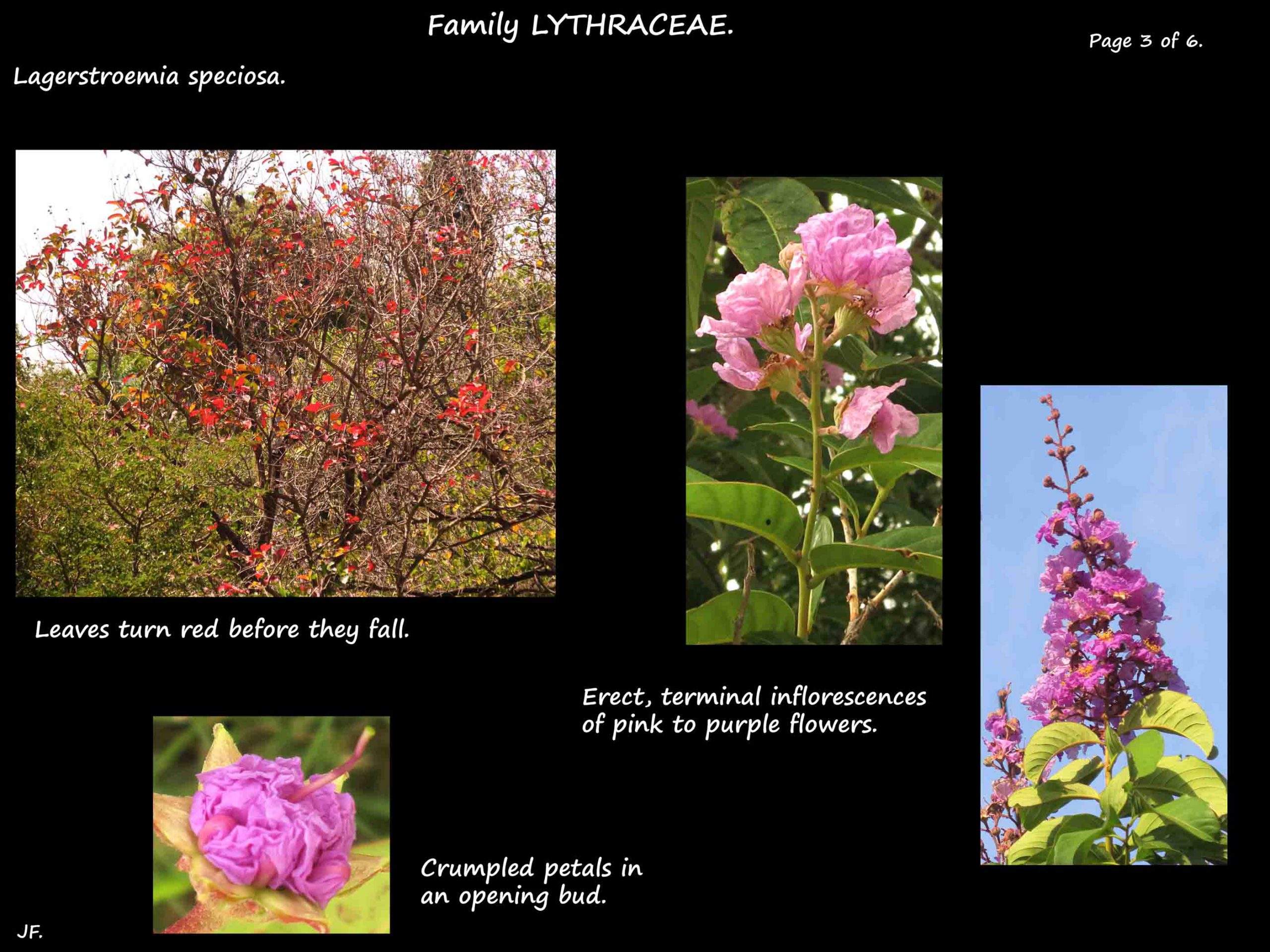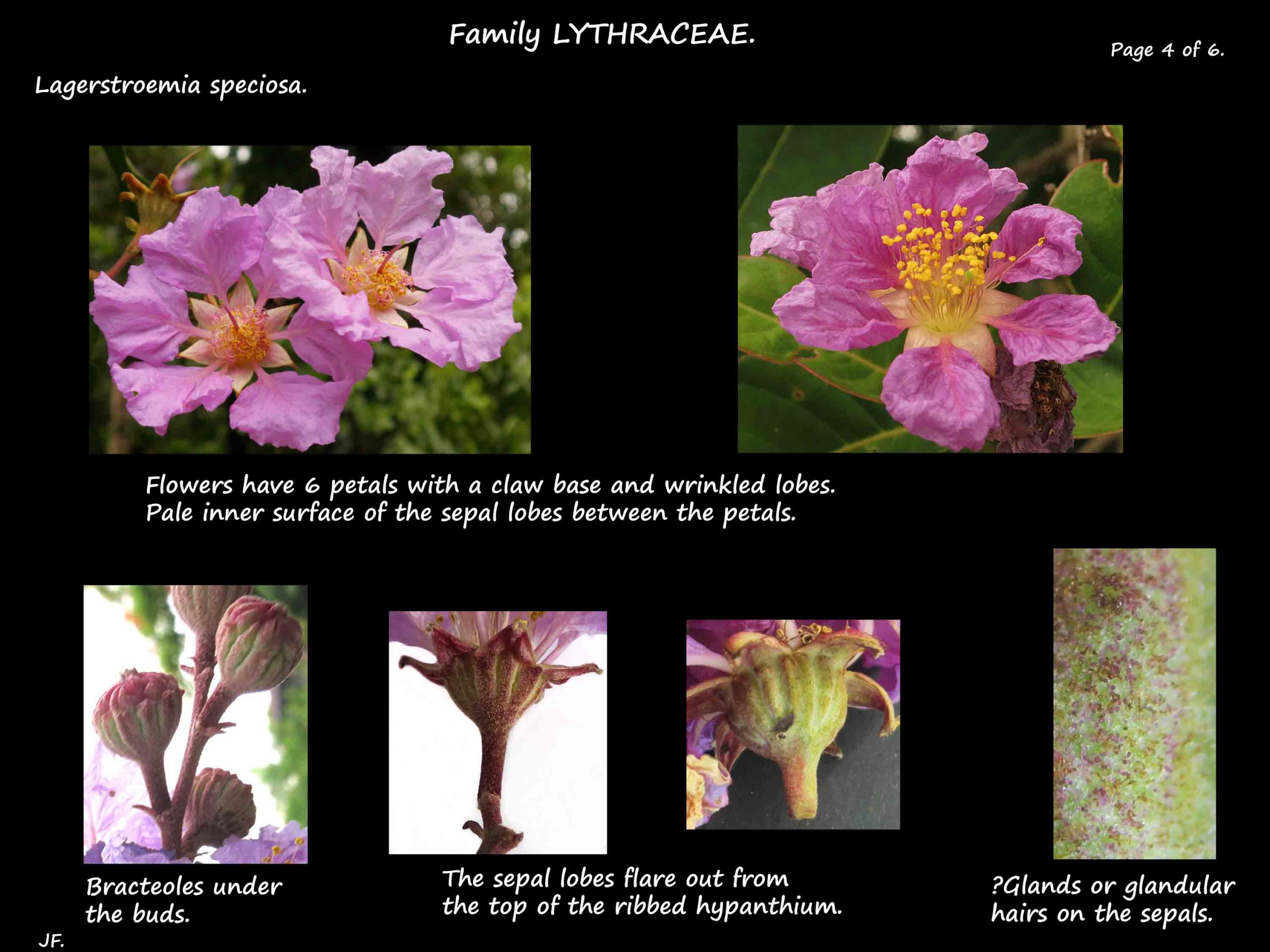Lagerstroemia speciosa.
In Family Lythraceae Queen’s Myrtle is native to India.
They are small to medium trees often up to around 15 m high.
The trunk may have small buttresses and the bark flakes off.
The foliage in the crown is dense.
Leaves are opposite to sub-opposite and in 2 ranks (distichous).
They are oval to elliptic, up to 15 cm long and have a pointed tip.
The veins are depressed on the upper surface and prominent underneath.
There are no hairs and no (or minute) stipules.
The leaves turn red before they fall.
The branched, terminal inflorescences, up to 40 cm long, are erect.
They hold a number of flowers that are up to 6 or 7 cm across.
Each flower is on a short stalk with small bracteoles.
The bases of the 6 sepals are fused into a bell-shaped hypanthium with 6 (9) pointed lobes.
The petals insert onto the rim between the lobes and the stamens near the base.
The outer surface of the hypanthium is green to red and has 12 prominent, vertical ribs.
The outer surface of the lobes is red and the inner surface is pale and smooth.
There are normally 6 petals with clawed bases and wrinkled lobes.
They can be pink to purple and may fade as they age.
There are numerous stamens in a few whorls.
The superior ovary typically has 6 locules each with numerous ovules.
The style has a small, capitate stigma with papillae on the tip.
The fruit are almost spherical, loculicidal capsules up to 2.5 cm long.
The calyx lobes remain on the base.
Each capsule has 6 chambers (4 to 8) containing a few shiny brown seeds.
The seeds are around 14 mm long including the apical wing.
J.F.
